First steps: Expanding the center's space - and its horizons
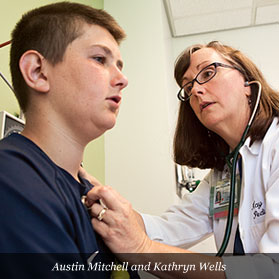 "As more children become long-term survivors, we can help them in their adolescent and young adult years with specialized clinics, allowing us to focus on any late effects associated with the therapy they received as youngsters and to offer risk-based interventions to promote optimal health."
"As more children become long-term survivors, we can help them in their adolescent and young adult years with specialized clinics, allowing us to focus on any late effects associated with the therapy they received as youngsters and to offer risk-based interventions to promote optimal health."
Not only does the center now feature upwards of 70 percent more space, increasing from approximately 64,000 to 110,000 square feet, it also serves adult and pediatric oncology patients under one roof for the first time, creating new synergies in research, easier transitions for children as they mature and the framework for a range of future specialized clinics.
The striking new space features three stories of floor-to-ceiling windows, ensuring that the new building’s many open spaces are illuminated by natural light, augmented by contemporary pendants and built-in lighting fixtures automatically regulated for maximum energy efficiency.
The sleek, modern look is enhanced with blonde wood accents and curving walls – from the shared atrium entrance to the pediatric and adult floors. Outside, a landscaped courtyard adds to the site’s appeal, particularly for families with children, creating a more friendly patient experience.
The net effect is an inviting patient-centered home.

Pediatric oncology goes from shared to dedicated space, moving from the UC Davis Children’s Hospital and the Glassrock Building on Stockton Boulevard to the entire first floor of the expanded building. With five examination rooms and 13 infusion chairs, in which patients receive treatments and are monitored immediately afterward, it’s a customized fit for the clinic’s current caseload plus its 60 to 75 newly diagnosed young patients each year.
A welcome new feature is the addition of two isolation rooms — ideal for those concerned about infection or for youngsters, adolescent and young adult patients wanting more privacy.
Adult oncology, until now split between the center and the Bulkley Building on Alhambra Boulevard, is consolidated on the new facility’s second and third floors. It features 16 examination rooms and a 31-chair infusion center, which also had previously been split between those buildings. Adult patients will now have a total of 32 examination rooms with the expansion and the existing building.
The expansion also allows for additional space and staff for Phase 1 trials, in which researchers test new drugs or treatments in a small group of people as a first step to evaluate their safety and potential benefit.
The expanded facility has inspired plans for a wide variety of specialized clinics, including a psychiatric program, palliative care and chronic pain clinics.
"A key focus for the UC Davis Comprehensive Cancer Center is supporting a robust clinical research program through which we develop therapeutics that have been generated in our basic research labs," explains chief administrative officer Jeanine Stiles. "Ever since the current center — which was built in 1991 and designated by the NCI in 2002 — space restraints have limited us from doing more research. In this new facility, we’ll be able to dedicate infusion chairs solely to Phase 1 clinical trials."
Stiles, who also serves as the center’s associate director for administration, points out that the expanded center can support much-needed trials for the pediatric population. "Pharmaceutical firms don’t necessarily invest funds in pediatric trials because young patients are such a small part of the cancer population," she says. "We now have space to expand existing programs and implement new ones to focus more attention on pediatric cancers and this patient population."
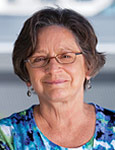
"For a Phase 1 program, a comfortable environment is crucial for the patient to spend the better part of the day."
The center’s clinical trials support unit currently runs about 150 protocols, all therapeutic in nature, for specific treatments of various cancers, and that number will expand with all services now under one roof.
"For a Phase 1 program, a comfortable environment is crucial for the patient to spend the better part of the day," says Cinda Lyon, the unit’s executive director. "We expect to expand our Phase 1 complement of trials because we’ll now have more infusion chairs, allowing us to accommodate more trial participants and their therapy."
With pediatric and adult oncology faculty in close proximity, physicians and researchers will be better positioned to consult on patient care, to discuss new medications in the pipeline and ideally to brainstorm new research ideas, among other benefits. "With all of our patients and faculty located in the same building," explains surgical oncology chief Richard Bold, "clinical research and patient care will be better coordinated and more efficient."
The expanded facility has inspired plans for a wide variety of specialized clinics, including a psychiatric program, palliative care and chronic pain clinics. "We now have the space and resources to develop new programs and bring in groups that have been involved in helping patients," says Bold.
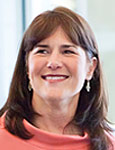
"A key focus for the UC Davis Comprehensive Cancer Center is supporting a robust clinical research program through which we develop therapeutics that have been generated in our basic research labs."
Jay Balagtas, acting chief of pediatric hematology and oncology, adds that the pediatric clinic will feature almost double the number of exam rooms, allowing providers to expand into a number of new programs. "These include a post-stem cell transplant clinic that will be operated in conjunction with Stanford University, as well as a long-term effects clinic for monitoring pediatric cancer survivors," he says.
That’s a big plus for Kathryn Wells, a pediatric hematology and oncology nurse practitioner at the center who has a special concern about the late effects that can follow childhood cancer treatment. "I’ve seen kids who’ve survived and now have medical, educational and psychosocial issues as they enter adulthood and beyond," she says. "As more children become long-term survivors, we can help them in their adolescent and young adult years with specialized clinics, allowing us to focus on any late effects associated with the therapy they received as youngsters and to offer risk-based interventions to promote optimal health."
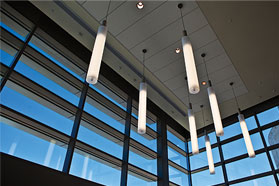
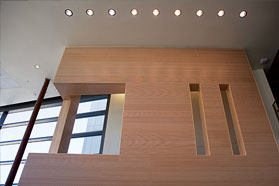

Survivorship is a concern as well for Charlotte Mitchell, whose son, Austin, is now turning 14 after having successfully battled leukemia from ages 4 to 9. "Austin has been in remission and is doing very well medically, though care is never really over for any child who’s had cancer; five years of emotionally challenging treatment sticks with a person," she explains. "I’m hopeful that the center will look after these kids to make sure they’re successful as they become adults."
In fact, with the co-location of pediatric and adult care, the center is better poised than ever to facilitate "longitudinal progression," the term used to describe the transitions that young cancer survivors encounter as they progress through pediatric, adolescent and young adult levels of primary and follow-up care. Children return to the same familiar surroundings and friendly faces as they mature.
"Frankly, we’ve had a break in continuity, but now we have global and longitudinal continuity, featuring psychiatric and other follow-up care," explains Bold. "What we strive for in length of survival needs to be matched in quality of life. The expansion offers us the space to do that while incorporating many specialties."
Mitchell looks forward to a more seamless approach to patient care. "We’ve been with the UC Davis Medical Center for 15 years, including Austin’s birth and my own recent bout with lymphoma. I’m proud of the campus, with all its newly developing areas, from the emergency room to the Comprehensive Cancer Center," she says. "That kind of growth can only allow for greater, better care, so we’re certainly very excited about the expanded center."










